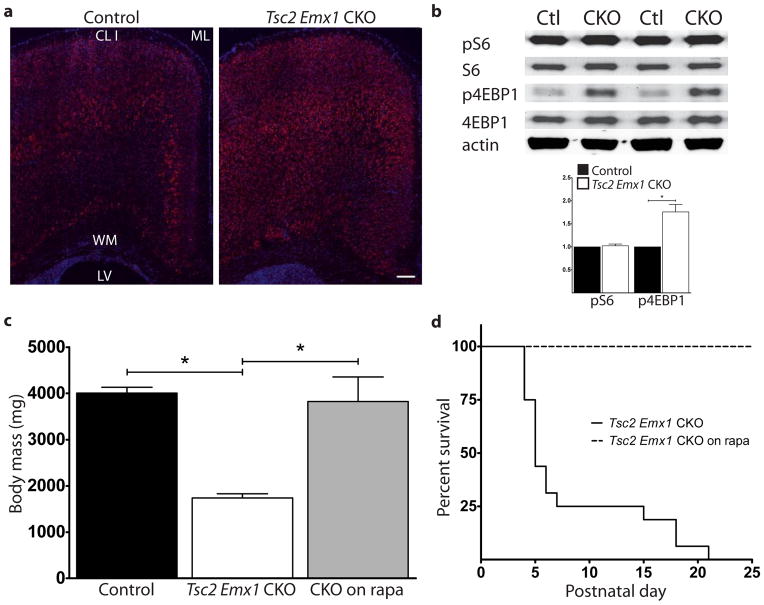Fig. 5.
Tsc2f36–37 Emx1 CKO mice have increased mTORC1 signaling in the brain and respond to rapamycin treatment. (a) Increased expression of phospho-S6 throughout the cerebral cortex of P5 Tsc2f36–37 Emx1 CKO mice. n=4 control and 4 Tsc2f36–37 Emx1 CKO mice. Size bar equals 100 μm. CL I=cortical layer I, ML=midline, WM=white matter/corpus callosum, LV=lateral ventricle. (b) Immunoblotting of dorsal extracts from P5 Tsc2f36–37 Emx1 CKO mice shows no change in phospho-S6 but increased overall levels of phospho-4E-BP1. Two representative control and Tsc2f36–37 Emx1 CKO extracts are shown. Quantitation of immunoblotting confirms increased levels of phospho-4E-BP1. *p<0.05 by Student’s t-test. (c) Rapamycin treatment rescues small size of Tsc2f36–37 Emx1 CKO mice, *p<0.05 by Student’s t-test. (d) Rapamycin treatment of Tsc2f36–37 Emx1 CKO mice prevented early death as compared to the previous cohort of untreated CKO mice. Rescue was statistically significant using a Log-Rank test, p<0.001. N=5 Tsc2f36–37 Emx1 CKO mice.

